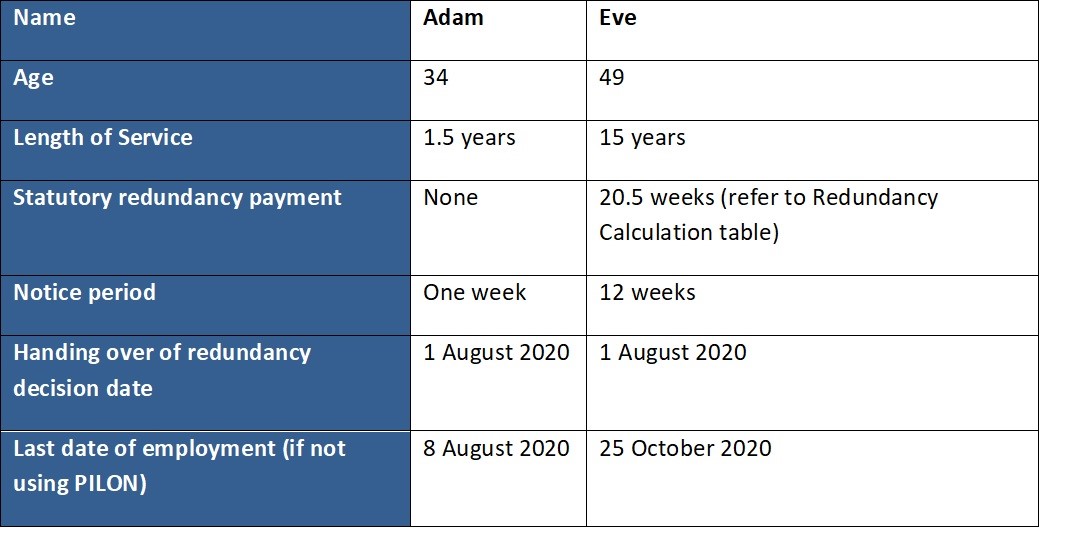What Happens to Redundancy If Company Goes Bust? An Overview to Your Rights
What Happens to Redundancy If Company Goes Bust? An Overview to Your Rights
Blog Article
Exploring the Operational Dynamics of Company Redundancy and Its Long-Term Sustainability

Redundancy Approaches for Company Continuity
In order to make certain undisturbed procedures, organizations must apply reliable redundancy strategies for service connection. Redundancy in this context describes the duplication of vital components or features within a system to mitigate the effect of prospective failures. By including redundancy techniques, organizations can boost their resilience against interruptions brought on by different factors such as all-natural calamities, equipment failings, or cyber-attacks.
One usual redundancy strategy is the implementation of backup systems and information storage space options. This involves producing duplicates of vital information and systems that can be turned on in instance of a primary system failure. In addition, companies can establish redundant communication networks and source of power to preserve connection and operations throughout unforeseen events.
Moreover, cross-training workers to perform several roles within the firm can function as a beneficial redundancy technique. This guarantees that important jobs can still be brought out also if crucial employees are unavailable as a result of ailment or other reasons. On the whole, effective redundancy strategies are crucial for businesses to maintain functional connection and lessen the influence of prospective disruptions.
Influence of Redundancy on Business Durability
Given the critical duty redundancy techniques play in guaranteeing business connection, checking out the influence of redundancy on business strength comes to be important for recognizing the alternative operational characteristics of a company. Organizational durability describes an entity's capability to adapt to disturbances, recuperate from obstacles, and change when essential while preserving core features. Redundancy, when purposefully carried out, can dramatically add to boosting a company's resilience when faced with unanticipated difficulties. By having backup systems, personnel, or processes in position, companies can better endure shocks and proceed operations with very little disruption.
In addition, redundancy can bolster employee morale and confidence, understanding that there are backup plans in position to attend to unpredicted conditions. This feeling of security can result in increased productivity and an extra favorable work atmosphere. Additionally, redundancy can promote development and imagination within a company as staff members feel empowered to take calculated risks, understanding that there is a safeguard to support them in case of failing. In general, the impact of redundancy on organizational strength is extensive, forming the long-lasting sustainability and success of a firm.
Stabilizing Effectiveness and Versatility in Redundancy
Accomplishing an unified stability in between operational effectiveness and flexible versatility is a critical challenge in the strategic release of redundancy within companies. Too much flexibility without a solid functional structure can result in ineffectiveness and disparity.
To stabilize effectiveness and versatility in redundancy planning, organizations need to meticulously examine their operational requirements, market dynamics, and critical objectives. Implementing lean methods can boost performance by enhancing procedures and eliminating waste, while promoting a society of adaptability and constant renovation can enhance adaptability. Furthermore, buying cross-training programs and robust interaction networks can aid cultivate a functional workforce efficient in dealing with varied tasks throughout durations of change. Eventually, discovering the best stability between effectiveness and adaptability is critical for constructing a lasting and resilient organization when faced with uncertainty.
Long-Term Sustainability Through Redundancy Planning
To make sure long-lasting stability and stability, companies need to tactically straighten their redundancy planning with lasting sustainability goals, thus harmonizing operational performance with adaptive adaptability. Firms must view redundancy not as a responsive option to prompt issues yet as a proactive strategy for lasting success.

Aggressive Procedures for Sustainable Company Operations
How can business proactively improve their functional sustainability for long-lasting success? Implementing positive steps is vital for companies aiming to ensure lasting procedures. One essential technique is to buy innovation and technology to improve processes, minimize waste, and stay competitive out there. Embracing sustainable practices such as decreasing power consumption, reducing carbon impact, and maximizing resource use can not only benefit the atmosphere yet likewise result in cost savings in the long run.
Moreover, cultivating a culture of constant improvement and understanding within the company can boost versatility to transforming market problems and client needs. Urging employee participation in decision-making processes and supplying chances for specialist development can improve morale, performance, and overall performance. visit their website Developing clear goals, keeping an eye on key performance signs, and consistently evaluating development are essential elements of proactive sustainability management.
Working together with providers, consumers, and various other stakeholders to promote sustainable practices throughout the supply chain can produce a causal sequence of positive influence - redundancy pay if company goes bust. By taking aggressive actions in the direction of functional sustainability, companies can construct resilience, drive innovation, and secure their lasting success in an ever-evolving company landscape
Conclusion

In the realm of business monitoring, the calculated deployment of business redundancy stands as an essential yet detailed practice that demands a delicate equilibrium between operational performance and long-lasting viability. By exploring the functional dynamics that underpin business redundancy and examining its broader effects for business strength and adaptability, a nuanced understanding of exactly how redundancy strategies can shape the future trajectory of a business begins to unfold.Given the important role redundancy methods play in making sure organization connection, discovering the impact of redundancy on business strength ends up being imperative for comprehending the holistic functional characteristics of a business. Generally, the impact of redundancy on organizational resilience is extensive, forming the look at here now long-term sustainability and success of a firm.
In conclusion, comprehending the functional dynamics of company redundancy is critical for making certain long-term sustainability.
Report this page